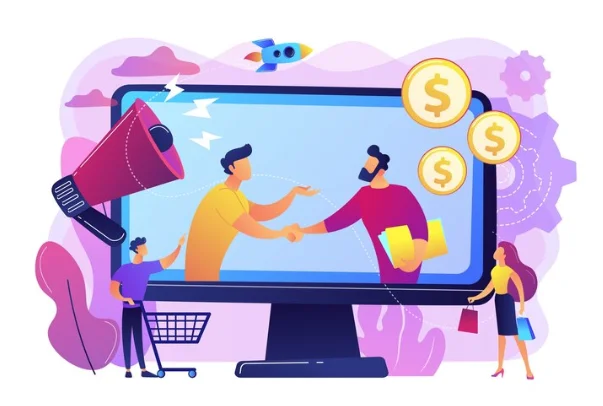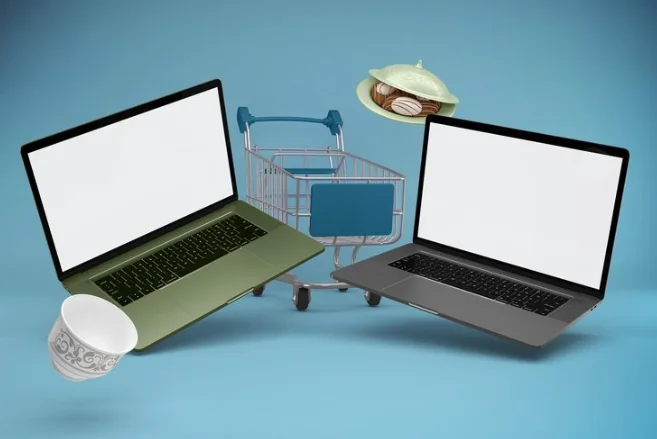Did you know that 80% of B2B shoppers now look forward to a customized online shopping journey? This remarkable figure underscores the escalating value of customization in B2B online commerce.
Previously, B2B online trade often felt impersonal. Buyers would navigate through generic product lists and place orders without much interaction. But now, B2B shoppers increasingly seek the same degree of customization they’re used to in B2C eCommerce experiences.
For B2B merchants, personalization provides a potent tool to enhance customer contentment, escalate sales, and secure a competitive advantage. Companies can improve the online shopping experience by tailoring the site to suit the tastes and preferences of each shopper.
How to Personalize B2B Ecommerce Experiences
1. Cater to Individual Needs

Creating a unique buying experience is more important than simply selling different products in B2B online sales. Each company works at its own pace and has its needs. Customization fits into these unique financial processes of different clients.
It changes a basic deal into a personalized journey that aligns with the client’s way of working. Providing tailored payment plans shows an understanding that money cycle and financial organization differ a great deal among firms.
Some might favor long-dated pay terms due to more drawn-out project periods, while others could gain from paying early deals that align with their money flow tactics. A large part of B2B customers express a liking for individualized pay choices.
B2B ecommerce personalization heavily relies on this flexibility. It aims to design a trading space where dealings are based on recognition of the customer’s business needs and likes more than just swapping products for money. As discussed in the in-depth guide, personalization can transform the B2B online shopping experience.
2. Personalize the Shopping Journey
Every shopper’s path in the B2B online trading field is one of a kind. A whopping 69% of B2B consumers want to buy experience like Amazon. It means they want tailored product suggestions and special prices.
The demand highlights how businesses must use personalized product catalogs and cost lists. This way, customers get to see choices that match what they need and like. Let’s look at an example. A firm that works with industrial machines could find value in a tailored catalog.
This catalog would highlight equipment and tools relevant to their industry. In addition, they would see price lists with rates that match their past buys. This personalized touch makes picking out items simpler. Moreover, it creates a feeling of special treatment and comprehension between the buyer and the seller.
Furthermore, tailoring search results and product finding has proven very successful, with roughly 60% of B2B online businesses seeing positive results with this approach. AI systems forecast and show customers items they will likely need or desire based on customer information like previous purchases and search records.
This anticipatory personalization leads to faster choices, as customers don’t have to go through irrelevant alternatives, ultimately leading to a more enjoyable shopping experience. Think of a B2B platform that promotes green choices on the first page of search results.
It happens when it spots a user’s continuous search for sustainable resources. This method makes the user’s search journey quicker. It also shows that the seller pays attention to what the user values and prefers.
3. Recommend Relevant Products

The importance of suggesting products in B2B online shopping is immense. New research showed that customized product suggestions result in 31% of online shop earnings. This vital number shows the effect of using customers’ past purchases and browsing habits to craft product ideas that sync with buyers’ wants and likes.
A B2B seller may check out a building company’s buying trends. They see that the company often buys sustainable construction materials. With this info, the seller can suggest new eco-friendly products.
Or, they can devise smart fixes the buyer might not know about yet. This forward-thinking approach makes the buyer’s search easier and makes the seller look like a helpful ally in the buyer’s business growth.
Additionally, aligning suggestions with the ongoing market patterns allows customers to stay informed about the latest products. It could potentially give them an advantage over their rivals.
Imagine if a customer’s responsibility is to purchase items for a healthcare facility. They might discover tips such as the latest medical equipment or popular healthcare IT solutions.
4. Leverage Customer Data for Omnichannel Experiences
Using omnichannel tactics in B2B e-commerce alters the way firms interact with their customers. Having a single customer profile throughout all platforms isn’t just a bonus; it’s required. This method ensures a uniform and customized experience, whether via email, the internet, or mobile.
The latest research reveals that 83% of B2B leaders think omnichannel marketing works as well or better than traditional ways. This success comes from using buyer details to deliver a smooth journey through every contact point.
Say a shopper asks about an item by email. They can then get tailormade info when they go to the website or app, crafting a connected story that leads them to buy. Furthermore, the inclination towards multiple channels of communication has been solidly identified.
Leaders from different sectors have revealed they value face-to-face, remote, and digital self-help interactions in the same degree. This equilibrium is vital as it considers the varied wants of business-to-business buyers. Depending on what they need, they might switch from one channel to another.
5. Building a Strong Data Foundation

For a B2B e-commerce personalization strategy, a solid data foundation is key. Having organized, structured, and sound data isn’t just good — it’s a must. Right now, B2B buyers do 67% of their shopping online.
That’s why it’s vital for businesses to have robust data systems. They need to grasp and understand customer actions perfectly. A robust data foundation starts with having clean and organized data. It requires the data to be free from mistakes, duplicates, and mismatches.
For instance, a B2B online retail site needs to make sure that the customer’s contact details are current and properly arranged. It allows good communication. Plus, information about the products has to be precise and complete. It will enable buyers to choose wisely.
The next phase involves using tools that activate client information. These gadgets aid companies in gathering, arranging, and utilizing data, transforming it into effective ideas.
For example, a business-to-business retailer may employ these instruments to divide customers according to buying habits. It enables the creation of marketing initiatives that strike a chord with specific groups.
Conclusion
Personalization in B2B eCommerce isn’t solely about closing deals; it’s about forming relationships. The main points for customization tactics are evident, as mentioned. These tactics promote better customer satisfaction and, ultimately, business growth.

Ruby Stauffer is a prominent technology blogger known for her insightful analysis and in-depth reviews of the latest tech trends and gadgets. Her blog has become a go-to resource for tech enthusiasts seeking reliable information and expert opinions on the ever-evolving world of technology.

